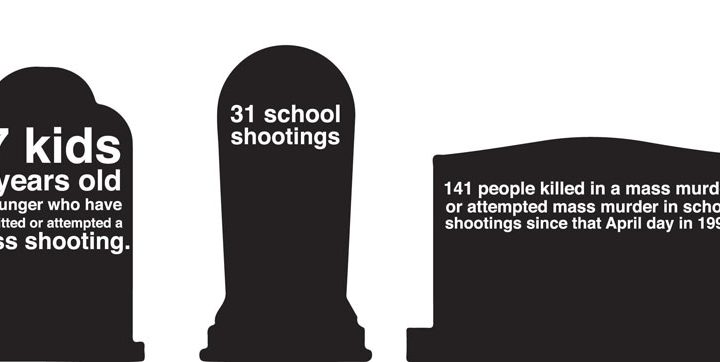Two gunmen walked into Columbine High School, killing 13 people in 1999.
Now, 18 years later, the after effects are still pertinent in modern day society.
The massacre took place in Littleton, Colorado, on April 20, 1999, when two teenagers killed 12 fellow classmates, a teacher and injured over 20 others.
Their spree began just before 11:20 that morning and by noon, they had turned the guns on themselves.
Since this day, there have been 31 school shootings, with one hitting a bit too close to Keene State College students at Sandy Hook Elementary School in Newtown, Connecticut, in 2012.
In this instance, a total of 26 people were killed, twice the number of the Columbine Massacre.
Most recently, in San Bernardino, California, a man shot and killed his estranged wife, who was a special education teacher at North Park Elementary School.
In this process, he also shot two young students, one who later died in the hospital.
The shooter, Cedric Anderson, then turned the gun on himself.
School shootings are no longer isolated instances and the extent of how many raises many issues and concerns.
According to ABC News’ review of reported cases, there had been an average of one shooting per week at a school or on a college campus in 2015.
The numbers reveal a lot about this nationwide issue and it has become more pressing as the issue of gun control and mental illness is evaluated.
FBI records indicated that there have been a total of 141 people killed in a mass murder or attempted mass murder in school shootings since that April day in 1999.
The reverberations and the impact of these tragic events have caused some action from schools and the government.
“This job of keeping our children safe and teaching them well is something we can only do together, with the help of friends and neighbors, the help of a community and the help of a nation,” President Barack Obama said on Dec. 16, 2012 in wake of the Sandy Hook massacre.
The Children’s Hospital of Philadelphia Research Center offered the following as a helpful solution of mass shootings: “Close gaps in mental health services for children with emotional and behavioral problems and to provide a broader continuum of mental health care, including exceptions to privacy protection policies to allow for better communication about the mental health needs of students.” This stems from the fact that there were 17 kids 15 years old or younger who have committed or attempted a mass shooting.
Mary Curtin can be contacted at mcurtin@kscequinox.com

